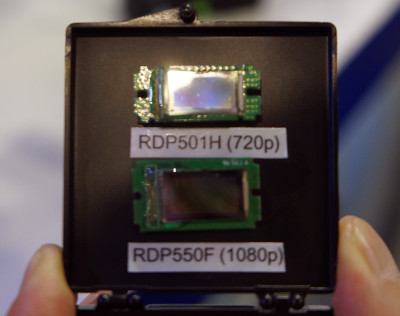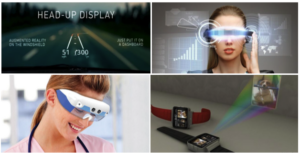Word on the street is that this year’s iZone (short for Innovation Zone) at the upcoming Society for Information Display (SID) Display Week will feature some hot new micro display module technology from Korea-based RaonTech.

The company currently offers a 720p HD LCoS optical display system that can be used in auto head-up, head mounted (smart glasses) and even traditional AV and pico projection applications. A new full-HD system is said to be in the works, and the company is thought to have an application in to be selected to participate in the hot iZone section of the Display Week Expo that starts June 2nd.
The company made waves last year introducing an LCoS solution that includes a highly integrated optical module and system controller for image processing, with LED control and data formatting for the micro display. The design team said they built in dual LCoS display support so bi-ocular systems can be supported. Along with LED driver the system includes DC-DC converter and boasts low power consumption. Its high frame rate supports field sequential color, and there’s even support for differential signal interface (LVDS) that allows long path system designs aiding product application flexibility. We reported on the company in our Mobile World Congress report (Raon Tech Shows LCOS for NTE Applications – subscription required)
 Raon Tech Chips Photographed by Display Daily at MWC this yearSpecs on the current LCoS panel (RDP501H) is a 0.5-inch diagonal 1280p x 720p with its own light source (LED) drive circuit. The controller also includes a DDR SDRM memory stack, claiming the advantage of being the most compact solution packaged in an 8mm x 8mm footprint, small enough to make smart glasses in a non-obtrusive package, according to Raon CEO, Brian (Beon) Kim. He reported last month (April 15) to Korea’s etnews.com a new Full-HD solution was in the works and will enter mass production “soon”.
Raon Tech Chips Photographed by Display Daily at MWC this yearSpecs on the current LCoS panel (RDP501H) is a 0.5-inch diagonal 1280p x 720p with its own light source (LED) drive circuit. The controller also includes a DDR SDRM memory stack, claiming the advantage of being the most compact solution packaged in an 8mm x 8mm footprint, small enough to make smart glasses in a non-obtrusive package, according to Raon CEO, Brian (Beon) Kim. He reported last month (April 15) to Korea’s etnews.com a new Full-HD solution was in the works and will enter mass production “soon”.
Other specs on the existing system include a virtual screen size of up to 60-inch with a 42-degree field of view (FOV), and 50-inch virtual screen size with 35-degree FOV. Its head mount display supports 3D viewing and includes a gyro sensor and built-in miracast, a wireless display standard and image mirroring technology used in moving content between smartphones and tablets to other displays.
More recently the auto HUD market has breathed new life into the micro display space. The driver HUD application is mounted in the vehicle’s dash, and can be used with a traditional windscreen film, but that requires accommodating a car’s unique windshield geometries and means low volume and so high cost designs. Recently, a new approach uses optics to project the image onto a see-through glass or plastic “combiner element” nested in the dashboard that can flip up for driver viewing access. In addition to price (which could be lower because of volume production advantages), another big advantage of the combiner HUD system includes a more compact design that can save up to 50% of the space, making this HUD solution more practical for compact cars with less dashboard volume available to accommodate the components. Traditional HUD display images are generally preferred by consumers as they give the appearance of the information floating outside the vehicle, on or near the hood (bonnet) of the car.
Raon Tech’s micro display solution was first introduced in June 2014 and the (fab-less) company reported working on the display optics for four years. With this and with its Bi-CMOS and CDMA radio technology, Raon Tech has been in the mobile space since 2009. If all goes well for Raon, expect to see perhaps a 5.5-inch Full-HD LCoS display solution and perhaps some working prototypes in the iZone early next month in San Jose. – Steve Sechrist

